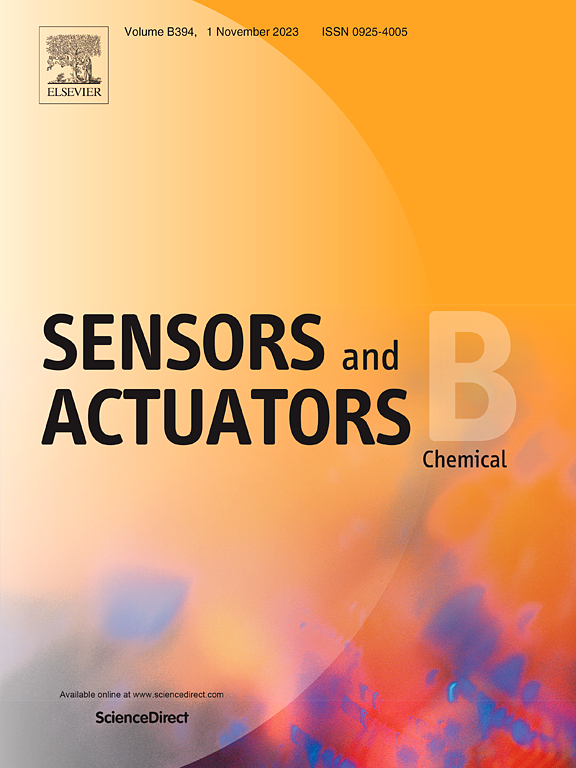Molecularly imprinted polymer-based electrochemical sensor for IL-6 detection with senescence cell models
IF 8
1区 化学
Q1 CHEMISTRY, ANALYTICAL
引用次数: 0
Abstract
Interleukin-6 (IL-6) is a multifunctional cytokine that plays a key role in driving proinflammatory responses in a wide range of acute, chronic, and infectious diseases. Therefore, it is of practical importance to monitor the IL-6 level of individuals in disease diagnosis and healthcare. Currently, there is an urgent need for developing rapid, cost-effective diagnostic and prognostic sensing systems. Herein, we developed a molecularly imprinted polymer (MIP)-based electrochemical sensor for IL-6 detection. The results showed that the MIP sensor demonstrated high sensitivity in the trace of IL-6 concentration, with a limit of detection of 31.3 fM and a wide dynamic range of 100 fg/mL to 1 μg/mL. Moreover, the MIP sensors are highly selective for IL-6, compared to other inflammatory cytokines (Interleukin-1β, transforming growth factor-β3, and tumor necrosis factor-α) and various interfering biomolecules (glucose, human serum albumin, fibrinogen, and lactic acid). We also confirmed that the MIP sensors maintained robust stability over three weeks without appreciable deterioration. The performance of the MIP sensors was validated using a lipopolysaccharide-induced cellular senescence model, emphasizing its potential as a point-of-care tool for IL-6 monitoring. The results suggest that our MIP-based IL-6 sensor could serve as an effective point-of-care tool in quantifying age-related physiological changes and monitoring low-grade systemic inflammation.
基于分子印迹聚合物的电化学传感器在衰老细胞模型中检测IL-6
白细胞介素-6(IL-6)是一种多功能细胞因子,在多种急性、慢性和传染性疾病的促炎反应中起着关键作用。因此,在疾病诊断和医疗保健中监测个体的 IL-6 水平具有重要的实际意义。目前,迫切需要开发快速、经济高效的诊断和预后传感系统。在此,我们开发了一种基于分子印迹聚合物(MIP)的电化学传感器来检测 IL-6。结果表明,MIP 传感器对 IL-6 浓度的痕量检测具有很高的灵敏度,检测限为 31.3 fM,动态范围宽至 100 fg/mL 至 1 μg/mL。此外,与其他炎症细胞因子(白细胞介素-1β、转化生长因子-β3 和肿瘤坏死因子-α)和各种干扰生物大分子(葡萄糖、人血清白蛋白、纤维蛋白原和乳酸)相比,MIP 传感器对 IL-6 具有高度选择性。我们还证实,MIP 传感器能在三周内保持稳定,没有明显的退化。我们使用脂多糖诱导的细胞衰老模型对 MIP 传感器的性能进行了验证,证明了它作为床旁 IL-6 监测传感器的潜力。结果表明,我们基于 MIP 的 IL-6 传感器可作为一种有效的护理点工具,用于量化与年龄相关的生理变化和监测低度全身性炎症。
本文章由计算机程序翻译,如有差异,请以英文原文为准。
求助全文
约1分钟内获得全文
求助全文
来源期刊

Sensors and Actuators B: Chemical
工程技术-电化学
CiteScore
14.60
自引率
11.90%
发文量
1776
审稿时长
3.2 months
期刊介绍:
Sensors & Actuators, B: Chemical is an international journal focused on the research and development of chemical transducers. It covers chemical sensors and biosensors, chemical actuators, and analytical microsystems. The journal is interdisciplinary, aiming to publish original works showcasing substantial advancements beyond the current state of the art in these fields, with practical applicability to solving meaningful analytical problems. Review articles are accepted by invitation from an Editor of the journal.
 求助内容:
求助内容: 应助结果提醒方式:
应助结果提醒方式:


